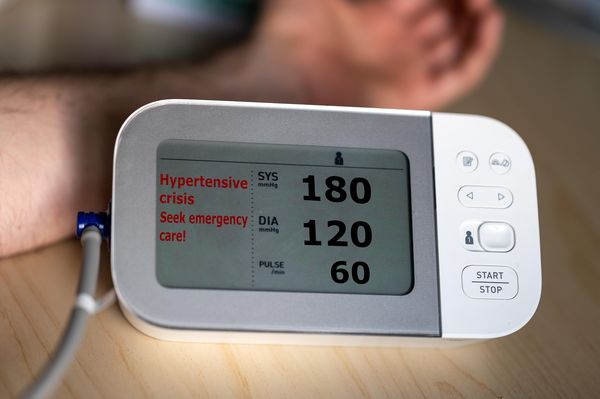
The state of siege in Gaza is going to get worse, according to the Israeli government. Electricity has been cut, and this affects the already collapsing water and sewage systems. Food can only get in if the UN manage to arrange safe supply corridors.
Gaza has been in more or less a state of siege, natural or political, for most of the lifetimes of most of its citizens – well over half being under the age of 30.
After nearly a week of bombing, in reply to the strategic shock of the massacre of Israeli settlers in villages and kibbutzim neighbouring Gaza, Israel is planning a ground operation. The aim is twofold, to destroy the Hamas leadership and their offensive weaponry, and liberate the 200 or so Israeli and international hostages taken since Saturday.
It’s going to be hard to manage the two aims at the same time. A hard fighting attack will endanger the prisoners. It will be easy to conceal them in such an overcrowded space.
The Israel Defence Forces is now in its sixth hot war in and around Gaza since Israel gave up control of the Gaza Strip in 2005. The army mounted big ground incursions in 2009, Operation Cast Lead which lasted 15 days, and in 2014 they mounted Operation Protective Edge which halted after 19 days. Neither went particularly well, and the militants of Hamas and Islamic Jihad continued to flourish.
This time 330,000 reservists have been called up. Defence Minister Yoav Gallant, now supported by opposition leader Benny Gantz, a former Army chief now back in government, appears to be preparing for a long operation.
He also needs to watch for flareups by militants in the communities of the West Bank. He also has the prospect of attack by the Lebanon’s Iran-backed Hezbollah into Northern Israel. Apart from sporadic volleys of mortar and artillery, Hezbollah hasn’t really shown its hand yet.
A state of siege seems to beset thinking on all sides. Israel continues to threaten ground attack and cutting of all supplies until the hostages are free.
There is little hint, however, of a serious plan for what happens after the ground attack. The Arab allies of the Palestinians blame everyone from the UN, to the US, the Western Powers, and the EU and Nato. The arguments on social media and broadcast stations resemble the dramatic surrealism of an MC Escher etching of endless staircases that never go anywhere and never quite connect.
The aims seem maximalist: to destroy Hamas on the one hand, and to destroy the state of Israel on the other. Israel has been trying to destroy the militants since Hamas became armed in 1987. They targeted the founders, the crippled Sheikh Ahmed Ismail Yassin and his aide Dr Abdel Aziz al-Rantisi. In January 2020 the Trump administration killed with a drone strike in Baghdad one of their stalwart sponsors, Qasem Soleimani the driving force of the Iran’s al-Quds force.

And yet Hamas thrived in Gaza, building and launching rockets, training commandos – not difficult to recruit in community with well over 50% unemployment. In Gaza Hamas and allies have run a militia police state since being elected in 2007. Even with their total control, it is surprising the Israeli intelligence services had no inkling that Hamas in Gaza was training a peculiarly psychopathic breed of fighters, for whom the status of civilians and the innocence of children counted for nothing. It’s a dystopian world almost beyond the creations of Margaret Atwood and George Orwell.
The Hamas militias live and recruit from the 2.3 million Palestinians in Gaza, and the 3 million or so on the West Bank. They do not work for them, primarily, as their main fantasy aim is the destruction of Israel. The objective of the present Operation Iron Swords by the Israeli command is the destruction of Hamas’s assets and command in Gaza. This is likely to lead to disappointment – so impacted, camouflaged and well concealed are the command centres, bunkers and tunnels.
Moreover Hamas has dispersed its command, political and fundraising operations as well as programmes for weapons across the Gulf region. A main centre is in Doha, where it has morphed from the culture of the Muslim Bortherhood. It trades in Bitcoin – raising, according to some sources a billion dollars by these means for the attacks of the past ten days. It has access to the know-how and sponsorship of the regime in Tehran. More specifically it gets weapons and training advice from the Iranian Revolutionary Guard Corps, and its al Quds commando force.
It also channels ideas, training and rocketry from Hezbollah , the Shiite militia of Lebanon, and partner in government there. Though united in hatred of Israel, the politics and ideology of the two are not entirely aligned, Hezbollah being Shia and Hamas predominantly Sunni.
The Gaza Strip has been a refugee twilight zone since Israel’s independence in 1948. In 1956 the Israeli prime minister David Ben-Gurion tried to hand it over to the UN, with the proviso that Israel would exercise demands for tough security.
In a Ford Foundation survey in the early 1980s the population was around half a million, the large proportion being refugees. Today there are 2.3 million in an area about a third that of London, and with almost no natural resources.
Welfare comes from the mosques, and from the UN Relief and Works Agency, whom Trump tried to defund.
Today UNRWA sponsors more than 80 schools, now affording what shelter it can to thousands flowing from the air attacks. UNRWA reported on Wednesday 383,000 Palestinians had been uprooted. Aid is now at a trickle. Habitually the agency feeds some 112,000 family units – more than half a million mouths. Across all territories some five million Palestinians require aid.
Gazans have been invited to leave the Strip by the Israeli government – but Egypt would accept only a few, and those would need full clearance certification.
For the rest, there is nowhere to go except the Mediterranean Sea – but even that is patrolled by Israeli gunboats.
Gaza is also a victim to the crisis in nature – the inroads and erosions of climate change into natural water supply, the excessive heat through most of the year, and the new phenomenon of Mediterranean hurricanes.
Studies by the UN Environment Agency ten years ago predicted that the deteriorating natural conditions as well as overcrowding would make living circumstances intolerable, and even unsustainable from 2023 onwards. One suggested remedy was a wholesale population shift or swap to new areas in the Negev or Sinai – but even the authors of the reports seemed to realise that in the political turmoil of the Middle East such schemes were totally impractical.
The airwaves and media are full of deafening shouting matches – across the media of the Gulf and the usual ports of call such as X, WhatsApp, Telegram, SnapChat, Tik Tok, Facebook there is a distinct impression that the fake news industry itself is finding it hard to keep up. The usual trolls from Eastern Europe, Russian and beyond have been surprisingly low key.
The extremes of either side are now in denial of the other’s existence, or right to exist. Today there 9 million Israeli citizens, or whom just under two million are Arabs with Israeli citizenship. On the West Bank the Palestinians number roughly three million, and in Gaza around 2.3 million. In the land between the Mediterranean and the Jordan there are now just over seven million Israeli Jews and almost the same number of Arabs – a strange demographic parity.
For all the killing and retribution and the rhetoric of revenge and justification, there will still be Jews and Arabs across the region. And whatever the apocalyptic claims and denials, they will still be neighbours.







